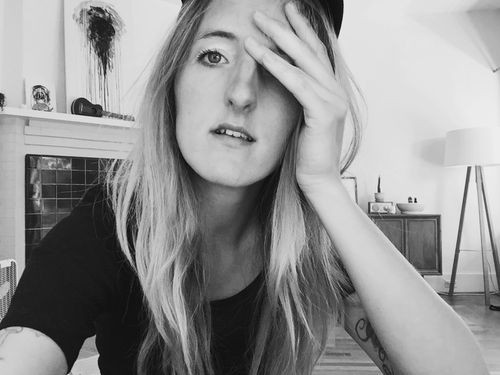In the Mood for Fashion
In the Mood for Fashion
Erika Astrid
July 10, 2020
When I’m doing a shoot, I am less focused on showcasing fashion than I am on the task of telling a story. I always start by determining an overall mood – everything else follows.
You often work with stylistic tools, such as reflections. Do you see fashion photography as a form of art?
Yes, definitely. I utilise fashion in order to tell a story. I’m not especially interested in the brands, but rather in the clothes themselves – what they convey, and how they can become part of the narrative.
You are also a fashion designer. How did you come to work behind the camera?
It’s true, I had my own fashion label from 2004 until 2012. I was very young, and the experience helped me gain a sense of autonomy and confidence within a creative field. Because I tend to ‘read’ life through imagery, photography was always on the cards for me. I essentially found my way to photography through my involvement in fashion – hesitantly, at first, but then I decided to see it through.
Does your fashion work ever feel restrictive?
In the beginning, I found it hard to draw the line between assignments and independent projects, but these days I don’t find it difficult at all. My clients hire me because of my particular style, but most of them ultimately want something a bit more commercial, which I find completely understandable. I am very creative in my free time, and that’s when I really let loose.
You shot this series in the studio – what can you tell us about your process?
The mood I conceptualised provides the initial spark. Everything else evolves from this. I intuitively follow this course, and let myself be swept up by it. It’s only once I’ve reached the end of that process that I’m almost content.
The series contains both colour and black-and-white images. How do you choose between the two?
I only shoot in colour, but sometimes I change track in post-processing. I let myself be guided by my internal process, and that forms the basis for every decision along the way.
Your models are adorned with painted lines on their faces and around their eyes. What was the thought behind this look?
It was actually inspired by children’s drawings. Whenever I do beauty shoots, I always work closely with the make-up team. I present them with the basic concept, after which they work on its creative manifestation. Obviously, if I’m not happy with something we will discuss and develop it until it’s right.
You seem to favour a classic and pared-down style – does this reflect your personal view of beauty?
Over the years, I’ve learnt that less is more. So if my models’ faces are covered in patterns, everything else has to be more simple. It really is all about finding the perfect balance, and that’s not always easy. I’ve done plenty of shoots in which there was too much of something, and it upset the balance. I learn and evolve with every project.
During a shoot, are you thinking about your own emotions, or those of the model?
I don’t really think about anything. Instead, I follow a process that is largely based on the vibe between myself and the model – that’s what gives rise to the images.
What was it like to work with the Leica S?
Fantastic. It’s a truly amazing camera, and the colours are stunning – like those of a cine camera.
You grew up in Germany and now live in the United States. Is there such a thing as an intrinsically German or American approach to photography?
Quite possibly, though I’ve never thought about it in that way. My father is American and my mother German, so I must have absorbed a little bit of both. Perhaps the German approach would be more pared down and restrained, and the American more wild and free.
The French photographer Yann Arthus-Bertrand once said, “The Earth is art, the photographer is only a witness.” Does this tally with your own experience?
Yes, I think it does. I capture only what presents itself – trying to force things usually doesn’t work out. In a sense, I bear witness to my visual and emotional perceptions, and subsequently share them with the viewer.
This article was originally published by Leica S Magazine.
Erika Astrid+-
Born in Gießen, Germany, in 1984, the self-taught photographer studied Display Design from 2002 to 2004. From 2004 to 2013, she had her own fashion label. After moving to the USA in 2012, she began to work in fashion photography. Her work has been seen in Harper’s Bazaar, Tush, Vogue Italia, Nylon, Paper and Marie Claire, among other publications. Her clients include labels, such as Fendi and Nike. More

















